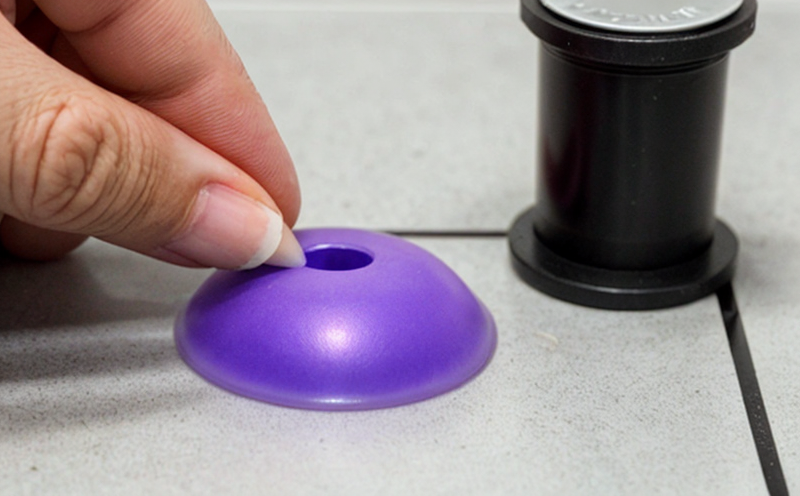DIN 66141 Micropore and Mesopore Surface Characterization
The DIN 66141 standard provides a comprehensive approach to characterizing micropores (below 2 nm) and mesopores (between 2-50 nm) within nanomaterials. This service is essential for industries dealing with advanced materials, including pharmaceuticals, electronics, catalysts, and environmental technologies. The primary goal of this characterization is to understand the surface area available for chemical reactions or adsorption processes.
The process involves several steps that ensure accurate measurement. First, a sample preparation method is crucial to maintain the integrity of the material’s pore structure. This can include dispersing the nanomaterial in an appropriate solvent and drying it under controlled conditions to prevent agglomeration. The use of specific solvents like ethanol or acetone ensures that the material does not lose its structural features during this step.
The characterization typically uses gas adsorption techniques, such as nitrogen physisorption at 77 K. This method allows for precise determination of both micropore and mesopore volumes. The Brunauer-Emmett-Teller (BET) surface area analysis is a key part of this process. It helps in calculating the specific surface area by measuring how much gas adsorbs onto the sample’s surface.
Post-characterization, it's important to validate that all steps have been followed accurately. This includes checking for any residual solvents or contaminants introduced during sample preparation which could affect the results. Quality control measures like replicate testing on known standards are used to ensure reliability.
The DIN 66141 standard ensures consistency and accuracy across different laboratories by providing detailed protocols. It helps in meeting regulatory requirements, enhancing product quality, and ensuring that nanomaterials perform as expected in their intended applications. Understanding these micropore and mesopore properties is critical for optimizing the performance of catalysts, drug delivery systems, and filtration membranes.
For instance, in pharmaceutical research, knowing the exact surface area can help in designing more effective drug delivery systems. In environmental technology, it aids in creating better filtration materials that can trap pollutants efficiently. This service plays a pivotal role in advancing industries where precise control over nanomaterial properties is paramount.
- Ensures compliance with international standards
- Supports quality assurance programs
- Aids in optimizing industrial processes
- Facilitates innovation and development of new technologies
Quality and Reliability Assurance
The reliability of DIN 66141 results hinges on several factors including sample preparation, instrument calibration, and operator expertise. Ensuring that all samples are prepared identically minimizes variability in the data. Regular calibration of instruments using certified reference materials guarantees accurate measurements.
Operators must undergo training to understand both the theoretical aspects and practical applications of this standard. This ensures they can interpret results correctly and troubleshoot any issues effectively. Quality control measures such as replicate testing on known standards help maintain consistency and accuracy across multiple tests.
The reliability of DIN 66141 results is further enhanced by adherence to international standards like ISO 9277 for BET surface area analysis and ASTM D3801 for gas adsorption. These standards provide consistent guidelines that ensure comparability between different laboratories worldwide.
International Acceptance and Recognition
The DIN 66141 standard enjoys widespread recognition in Europe, with many countries adopting it as part of their national standards or industrial practices. Its acceptance is due to its robust methodology and the precision it provides for characterizing micropore and mesopore surfaces.
Adoption by major industries has further solidified its status as a reliable tool for nanomaterial analysis. Compliance with DIN 66141 can enhance your product’s reputation, ensuring that you meet stringent quality standards and regulatory requirements.
Laboratories offering this service are often accredited to ISO/IEC 17025, which is an international standard specifying general requirements for the competence of testing and calibration laboratories. This accreditation ensures that all processes adhere to high-quality practices, adding credibility to your test results.
Environmental and Sustainability Contributions
The characterization provided by DIN 66141 can contribute significantly to environmental sustainability efforts. By optimizing the performance of nanomaterials used in filtration technologies or catalysts, industries can reduce their environmental impact. For example:
- Filtration membranes with enhanced micropore and mesopore properties can trap more pollutants, reducing waste discharge.
- Catalysts optimized through precise surface area characterization can increase efficiency, leading to lower emissions during chemical reactions.
Understanding the exact pore structure of nanomaterials allows for better design choices that are both effective and environmentally friendly. This service supports industries in their journey towards more sustainable practices while ensuring high-quality products.





